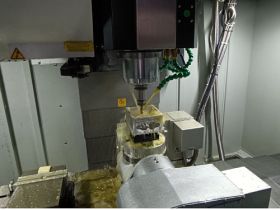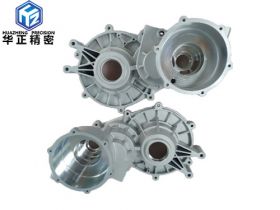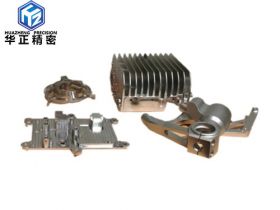Technology Center
Recommended Products
Contact Us
Contact Person: Cindy Zhu
TEL:+86 13418453374
Understand CNC machining tolerances
Understand CNC machining tolerances
The concepts of component interchangeability and dimensional tolerances have become a recognized part of the manufacturing industry. Unfortunately, the misuse of the latter can cause a series of problems. For example, too tight tolerances may require parts to undergo secondary grinding or EDM operations to complete, thereby unnecessarily increasing costs and lead times. "Too loose" tolerances or inconsistencies with the tolerances of mating parts may result in inability to assemble, resulting in the need for rework, and at worst, the finished product cannot be used. In order to avoid these unpleasant situations, this design technique includes some guidelines on how to properly apply part tolerances, as well as the definition of some more commonly used annotations. We will also discuss the industry standard for part tolerances, called Geometric Dimensions and Tolerances (GD&T).
1. Standardized tolerances for CNC machining: Assume that the standard prototype and production tolerances are +/-0.005 inches (0.13 mm). This means that the position, width, length, thickness, or diameter of any part feature will not deviate from the nominal value by more than this value. If you plan to process a 1 inch (25.4 mm) wide bracket, the size will be between 0.995 and 1.005 inches (25.273 and 25.527 mm), and the bracket has a 0.25 inch (6.35 mm) hole on one leg, then the diameter of the bracket It is 0.245 to 0.255 inches (6.223 to 6.477 mm).
2. CNC machining tolerance guide: please pay attention to the bilateral tolerance. If expressed in unilateral terms, the standard tolerance should be +0.000/-0.010 inches (or +0.010/-0.000 in.). All of these are acceptable, as are the metric values, as long as you specify in the design. To avoid confusion, please follow the "three-position" dimensions and tolerances shown, and avoid an extra zero position of 1.0000 or 0.2500 inches. Unless there is an absolute reason to do so.
3. Precautions for surface roughness of machining tolerances: In addition to length, width, and hole size, there are also part tolerances such as surface roughness. In the standard product, the surface roughness of flat and vertical surfaces is equal to 63 µin. A curved surface equal to 125µin is better. For most purposes, this is a sufficient finish, but for decorative surfaces on metal parts, we can usually improve the appearance by light blasting. If you need a smoother surface, please indicate in your design and we will try our best to meet your requirements.
4. Geometrical dimensions and tolerances: There is another consideration. As mentioned earlier, we can accept GD&T tolerances. This provides a deeper level of quality control, including the relationship between various part features and shape and fit qualifiers. The following are some of the more common methods:
Real position: In the bracket example cited earlier, we mark the hole position by specifying the X and Y distances and their allowable deviations from a pair of vertical part edges. In GD&T, the position of the hole will be represented by the true position of a set of reference datums, accompanied by the qualifier MMC (Maximum Material Condition) or LMC (Minimum Material Condition).
Flatness: The milling surface is usually very flat, but due to internal material stress or clamping force during processing, some warping may occur after the parts are removed from the machine, especially thin-walled and plastic parts. The GD&T flatness tolerance controls this by defining two parallel planes in which the milling surface must lie.
Cylindricity: For the same reason, most milled surfaces are very flat, most holes are very round, and the same is true for turning surfaces. However, using a tolerance of +/-0.005 inch (0.127 mm), the 0.25 inch (6.35 mm) hole in the bracket example may be rectangular, and the other one-way dimensions are 0.245 inch (6.223 mm) and 0.255 inch (6.477 mm). The use of cylindricity is defined as two concentric cylinders in which the machined hole must be located. The manufacturer can eliminate this unlikely situation.
Concentricity: The rings on the bullseye are concentric, just like the wheels and axles of a car are concentric. If the drilling or reaming must be exactly the same as the coaxial counterbore or circular boss, the concentricity marking is the best way to ensure this.
Verticality: As the name implies, verticality determines the maximum deviation between the horizontal processing surface and the nearby vertical surface. It can also be used to control the perpendicularity of the turning shoulder to the adjacent diameter or the central axis of the part.
In addition, Huazheng Precision has passed ISO9001 quality system certification. According to requirements, we will conduct 100% full inspection of your parts, as well as provide quality inspection reports, first article inspection (FAI), material certification, etc.
















